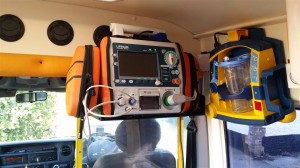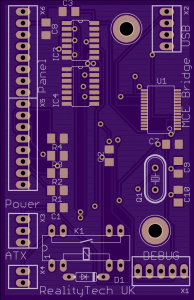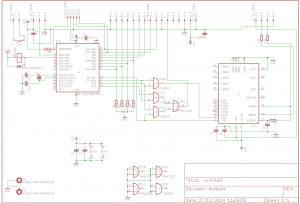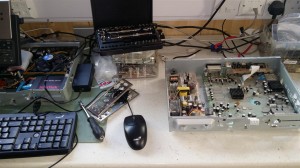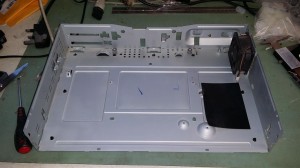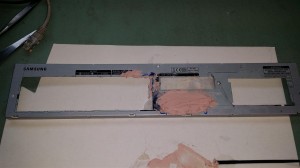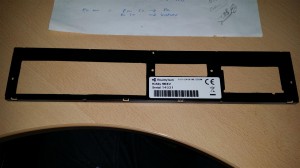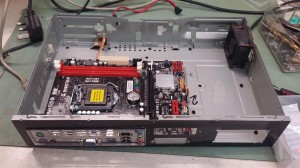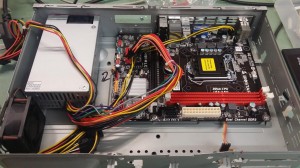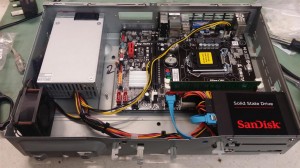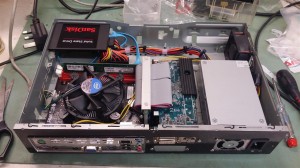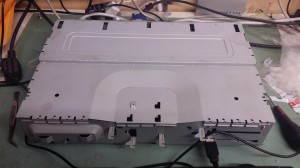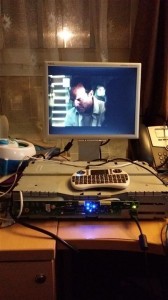While talking with a Collegue yesterday the issue of their server came up. The IT guy has, and I cant fault the logic, gone with Linux and Samba to power what is essentially a Windows Network. This would be an ideal situation except for a small number of flies in the ointment. At the most basic Level, drivers, are the first hurdle. Te Windows drivers include support for all manner of offload engines, acceleration technologies etc. The Linux drivers mostly lag way behind the Windows ones, but they are out there as a rule. Just to get the bare server up and running to snuff can take a while. So starting from a bare server we have a TCO at this point of £0 for Linux and £450 for Server 2012. Now if we run on from here assuming you just install and go you’ll already be having problems. You’ll be seeing performance hits on Network and RAID hardware, easilly fixed with drivers however we are now talking a good hour or two fiddling and faffing with the Manufacturer Linux drivers (if they exist) Bar just running a CD under Server 2012. Say your time is worth £50 an hour and the drivers arent quite right and thus a build from scratch is needed, two hours, we stand at £100/£450. From experienc 4/5 hours is closer to reality as there will be missing things you dont find. On top of that we now have to get Samaba working on this server, Domain config with Samaba isnt fun and the documentation is poor, we can easilly have blown a day by now so thats 8 hours or £400 vs £450 TCO on the software side. Now heres the nasty bit. That Linux server could EASILLY take you up to a day to get working to a useable extent. The Windows server, from bare metal to running a domain, 2 hours tops. being far we will allow for that two hours so £400/£550. SO excellent you saved £100, probobly shaved a few days off your life too. Only its not done. As a rule AD and Windows *just* works at the basic level. You’ll now be looking at 5 mins per machine to connect the PCs. Samaba, prepare for permission and authentication hell, possibly on a per PC basis. In short unless you are a Samba God you wont get it right first time and file permissions are the usual cause. In short, the Windwos Side could be finished in 4/5 hours total from start to users loging in with Roaming profiles and you could Probobly have exchange going too in that time. With Samba you may end the day at ‘Almost works’ and I’ll fix the niggles tomorrow. This is a ‘bit of string’ situation but already there is a disparity here. The Windows server is done and working. I’ve gone home and am Reasonably happy about a productive day, the Samba installer is probobly not having such a good day.
Now lets look at he basics for what we might want to do with this server.
A small office I’m probobly going to want IIS for various tasks (It failry central to 2012 so not having it isnt an option TBH) SO I have a web server and a scripting engine out of the box. I have a pretty useable and simple to use user administrator and unless I install Server Core (and even then not neceserilly) I can manage users, groups, email routing, web setup, replication and indeed about 90% of basic office tasks and be done by the end of that first day.
Linux, well we’ve fixed Samba. I now have to Install Apache, almost certainly some flavour of PHP, probobly MySQL (We do on Windows anyway) and then start installing admin interfaces. Now most Distros do come with various bits and bobs there already, however you’ll find apps start asking for newer PHP versions, or extensions which need newewer (or older) versions, it can get knotty fast.
Its not unfair to say that the windows server would cost you about £800 and be done on day one. (I’m not factoring in Exchange cost, the reason being getting the same functionality for Linux is hell/impossible)
Linux wise we are at two days, so again £800 and will have a reduced level of functionality. Now theres another big trick there many miss. That extra day? Well theres your £400 but if this is a live or new setup you could be having to factor user downtime in there too so lets look at that.
Users cost less than consultants, how much yours cost is down to you but if we assume the following. You average user is on £25K There are about 250 working days per year, so thats anice easy £100 a day; for an 8 hour day thats £12.50 and hour. Think of a small office of 10 users (Yes I’m keeping the maths simple) so thats costing you £125 an hour to pay them, now its about to go wrong…
On Monday you’ve scheduled a server upgrade, you are doing it yourself and lets say its a complete refresh and start over. Your users have been told no PC use (its a little contrived but it DOES happen in small business). So for Windows we were down for a day, thats £1000 in lost time. You know where this is going so we have £2000 on the other time. Its interesting to note that the extra £1000 would purchase a low end Windows server!
Its not hard to see the Linux Admin over a day behind. If thats so its all gone wrong now as the free server has cost heading on for twice the paid one.
Its not all gravy though, troubleshooting MS products can be an issue, debugging and logging with MS products can be lousy and that can slow down finding some issues. There is a very twisty mindset required sometimes, that said. MS will help you if you call (within defined limits)
Its all up and running and now we need to think about day to day use. Adding a new printer and sharing it can be done quite feasably in a few minutes on a Windows server and this includes making sure users get to it with no work from them, dirver issues etc. The whole thing can certainly be comfortably wrapped up pretty fast. Linux offers no such mechanism and indeed its even possible that there are no native drivers for you printer, with a USB device this could mean a lot of work.
So to sum up, think long an hard about what you want to do. If you have plenty of time and it has not associated value (You need to look at the way you use your time!), want to use older hardware, maybe only want the absolute basics of a Windows network and have low blood pressure then go for it. There are situations it is exactly the right tool. If it *has* to work then it may be significntly cheaper to go Windows.
Now to stop the flames, we normally deploy both. In fact we often use Samba for slave/backup operations and most of our sites do have at least one dedicated Linux system. Some things *do* work much better, often the server will be providing a web backend or database services to Windows (Access can use MySQL). Right tools for the right job. I also know I’ve simplified a LOT in here, but the numbers do stack up if you sit down and work your project out on paper you’ll see similar results, at best the Linux option may well cost you as much and deployment methodology can make a big difference but its unlikeley the TCOs will ever be better than eaqal and the £0 TCO of Linux is a myth for business. Businesses rely on saving money as a rule, if Linux were a magic bullet Windows would have no market.
